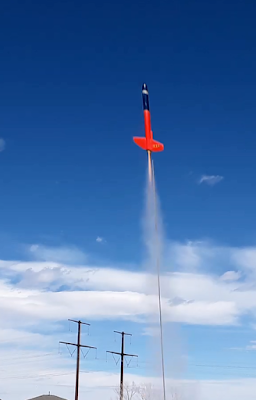Each section of the tube will be done separately with eight panels of equal width applied around the model's circumference.
This will be the most difficult section due to the need to fit the panels around the fins and the aft launch lug.
As with the fins, the riveted panels are made from Avery paper with poked-through rivet detail.
Here is the first panel measured out, marked, cut from the larger label sheet, and rivet detail applied.
Before affixing the panel to the model, I like to lay it along the edge of the bench and burnish the edges with an Xacto knife handle. This helps to flatten the slightly raised edge that was formed when the panel was cut out.
Now the panel can be carefully placed into position. Not that there is no rivet detail next to the fin root. This area will later be covered up with an addition glue fillet layer and more detailing.
This is the panel that encompasses the aft launch lug mount. Since I want the lug to be glued directly to the body tube later on, I must cut the paper panel to fit around the lug footprint.
Once two adjacent panels are in place, I press the seam down with the curved end of a pair of tweezers. This evens out the edges and ensures that they are properly stuck down to the tube.
I have to be very careful not to allow the handle to wander over onto the rivet detail, as it will flatten those features out as well.
And, so it goes with the remaining panels around the circumference of the tube.
Note that I am not overly concerned that the ends of the individual panels do not precisely line up. These will be covered later on with some wide simulated steel banding details.
Here is the completed tail section....
Each of the panels took between half an hour to forty five minutes to lay out, cut, detail, and apply.
This is probably the most finely detailed model rocket I will ever build. A lot of time-consuming small-scale work, but it's been fun so far.
Cheers.









































